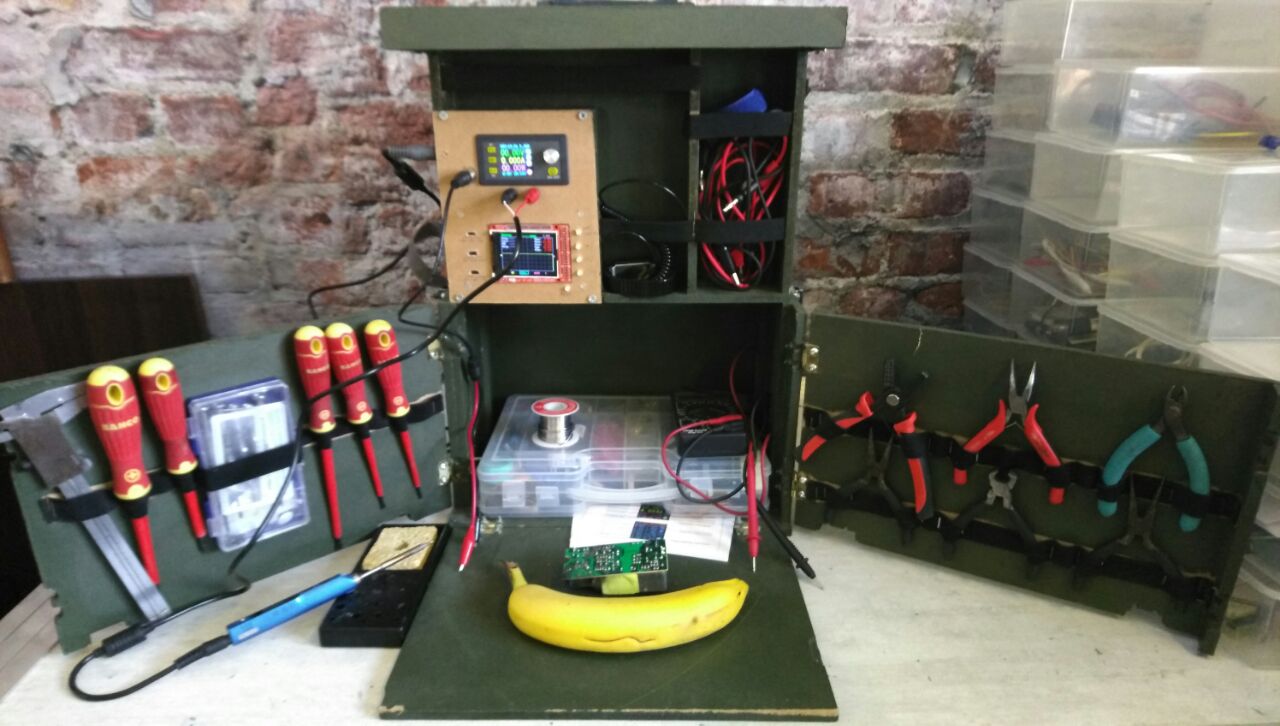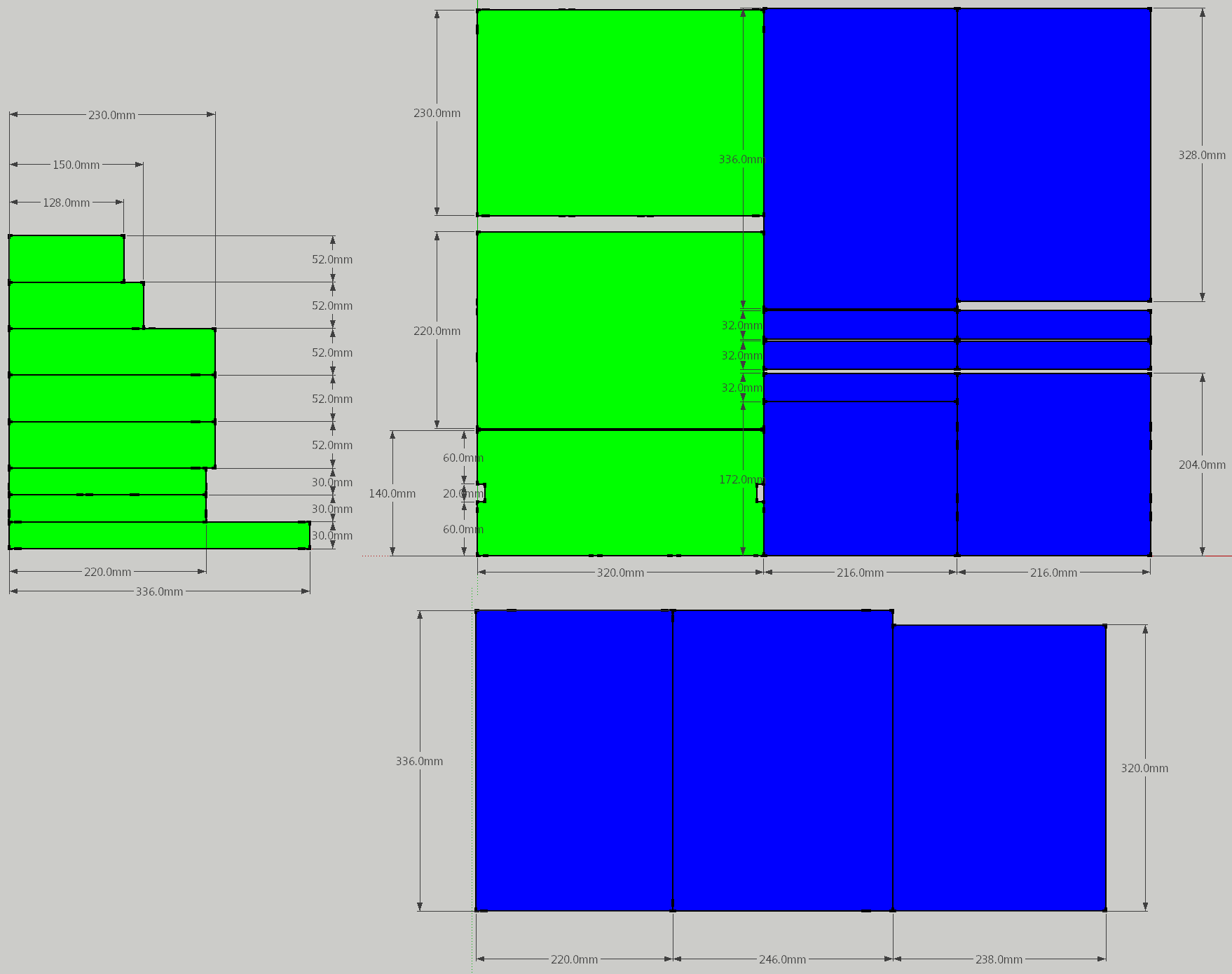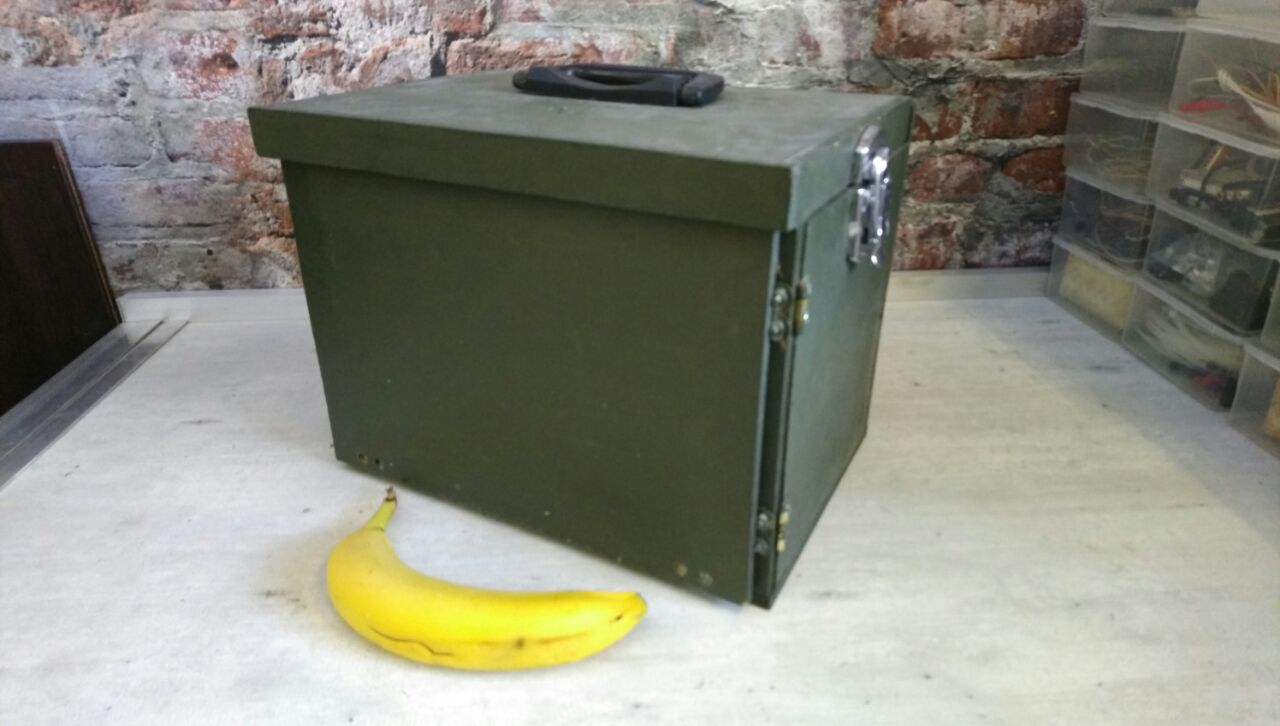Difference between revisions of "Portable electronics workbench"
(Finally created the project page of my portable electronics workbench (it's still alive and kicking)) |
(added project notes and tips) |
||
| Line 1: | Line 1: | ||
{{Project | {{Project | ||
| − | |Featured= | + | |Featured=Yes |
|State=Completed | |State=Completed | ||
|Members=Xopr | |Members=Xopr | ||
| Line 26: | Line 26: | ||
</gallery> | </gallery> | ||
The model I've created to derive the measurements from is [[media:bench_sketchup_model.zip|here (zip)]] | The model I've created to derive the measurements from is [[media:bench_sketchup_model.zip|here (zip)]] | ||
| + | |||
| + | === notes === | ||
| + | * the design is derived from measurements of the plastic compartment box on the back, the laptop PSU, multimeter and tools I had at hand or found useful | ||
| + | * everything that needed to be bolted down has been done with countersunk bolts to prevent obstruction or scratching the underlaying surface | ||
| + | * the "rubber" band that holds the tools and storage box came from a fabric or textile shop and is stapled onto the wood | ||
| + | * the left door has to close before the right, and will be held in place by the work area which in place is held closed by the lid of the sliding mechanism. | ||
| + | * when the sliding part is pulled out, it can rest on top of the base by placing it a bit forward (on the thicker walls that provide the sliding mechanism in the first place) | ||
| + | * paint MDF; use a lot of paint to reinforce the material since (hardware store quality) MDF is really soft. Note that you might have to accommodate for the thickness of the paint layer | ||
| + | * it actually might be way better/stronger to use 9mm triplex/multiplex | ||
| + | * keep the saw blade thickness in mind when slicing up the wood | ||
| + | * note that there is no storage room underneath the sliding part (a couple of sheets of instructions at most) | ||
| + | * the bench is designed with compactness in mind; it takes some time and effort to set it up and tear it down so it's not a "quick bench" | ||
Revision as of 11:07, 22 November 2021
| Project: Portable electronics workbench | |
|---|---|
| Featured: | Yes |
| State | Completed |
| Members | Xopr |
| GitHub | No GitHub project defined. Add your project here. |
| Description | Workbench on-the-go |
| Picture | |

| |
This project page is more of a reference to xopr's notes: About 4-4.5 years ago I needed to take measures to turn my guest bedroom/workshop/storage into a babyroom. To still be able to do some tinkering, I've decided to create a portable electronics workbench with small and fairly cheap tools:
- 170W laptop power brick
- DSO138 oscilloscope
- DPS3005 30V 5A lab power supply
- TS100 soldering iron
- multimeter
- some banana plug cables
- box with electronic hardware and dev boards
- various pliers and screwdrivers
- locks and handlebar from an old hardware case from back when it was popular to walk around with a desktop-pc-in-suitcase
I've designed the bench using Sketchup with 9mm MDF walls in mind.
The model I've created to derive the measurements from is here (zip)
notes
- the design is derived from measurements of the plastic compartment box on the back, the laptop PSU, multimeter and tools I had at hand or found useful
- everything that needed to be bolted down has been done with countersunk bolts to prevent obstruction or scratching the underlaying surface
- the "rubber" band that holds the tools and storage box came from a fabric or textile shop and is stapled onto the wood
- the left door has to close before the right, and will be held in place by the work area which in place is held closed by the lid of the sliding mechanism.
- when the sliding part is pulled out, it can rest on top of the base by placing it a bit forward (on the thicker walls that provide the sliding mechanism in the first place)
- paint MDF; use a lot of paint to reinforce the material since (hardware store quality) MDF is really soft. Note that you might have to accommodate for the thickness of the paint layer
- it actually might be way better/stronger to use 9mm triplex/multiplex
- keep the saw blade thickness in mind when slicing up the wood
- note that there is no storage room underneath the sliding part (a couple of sheets of instructions at most)
- the bench is designed with compactness in mind; it takes some time and effort to set it up and tear it down so it's not a "quick bench"

